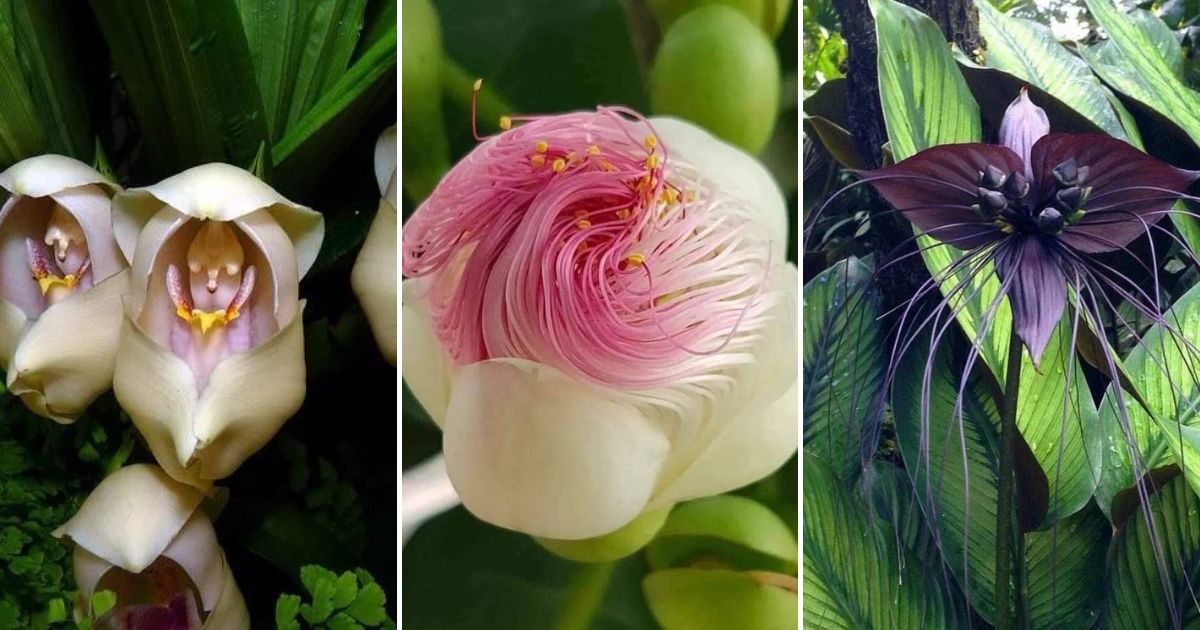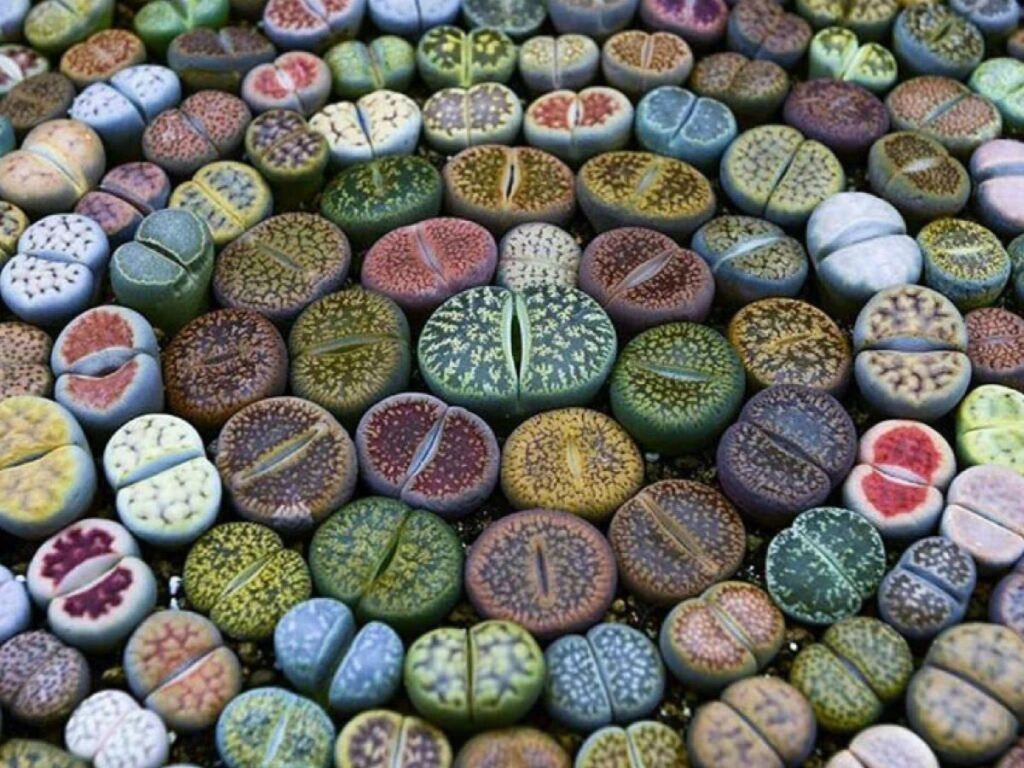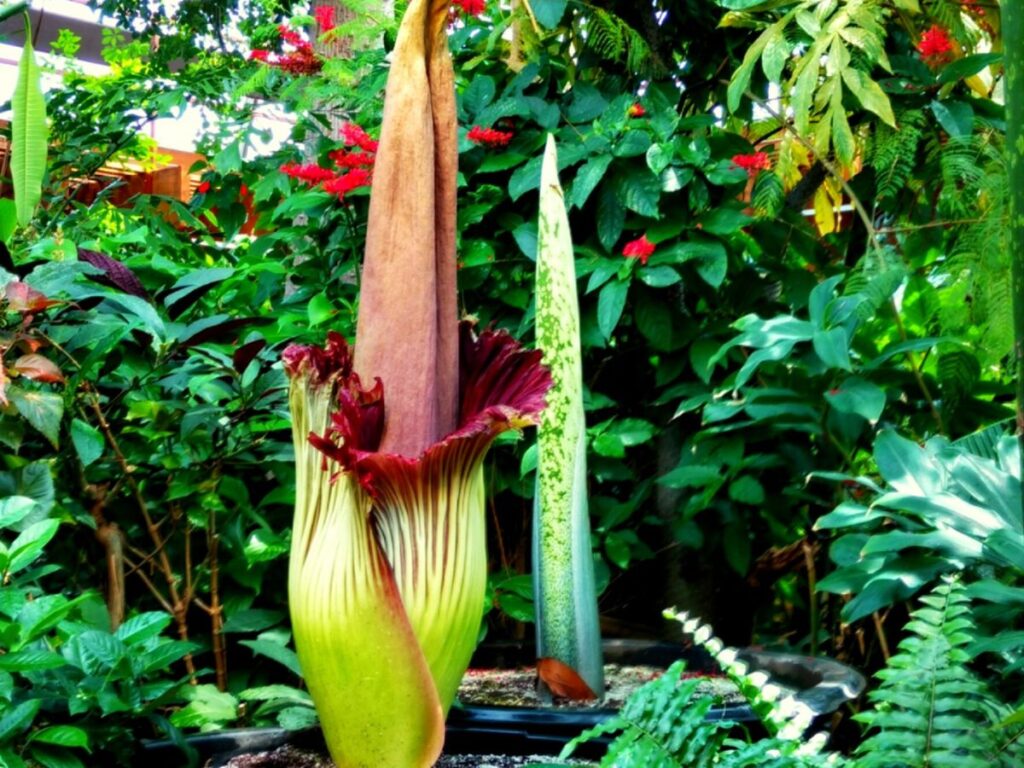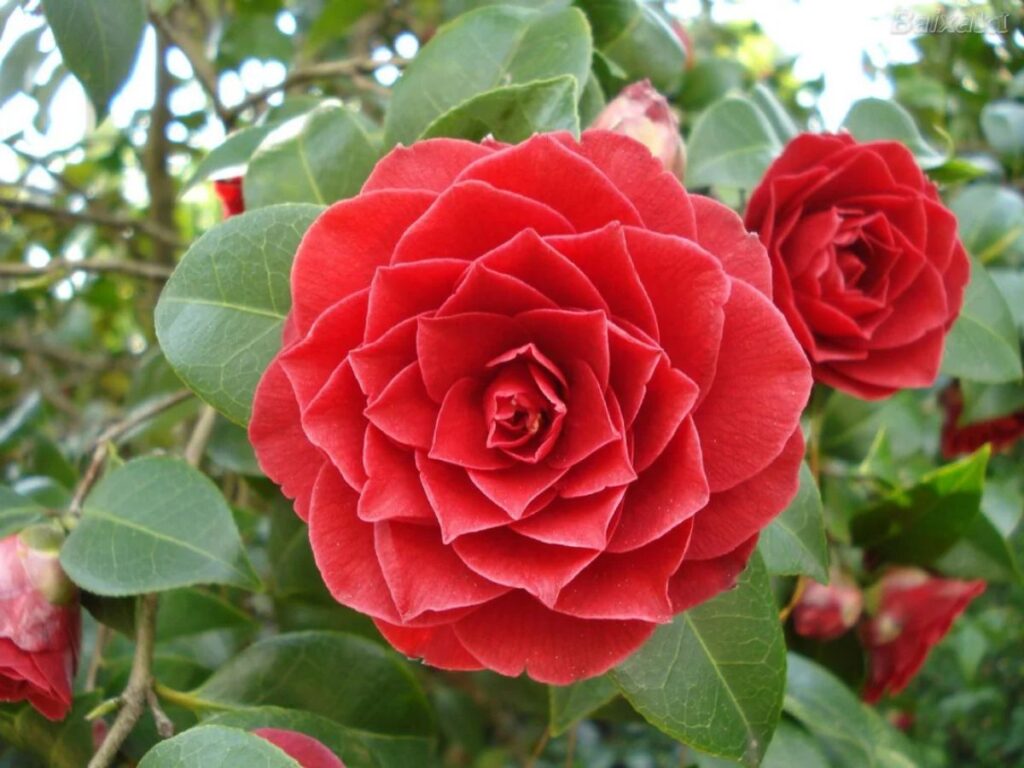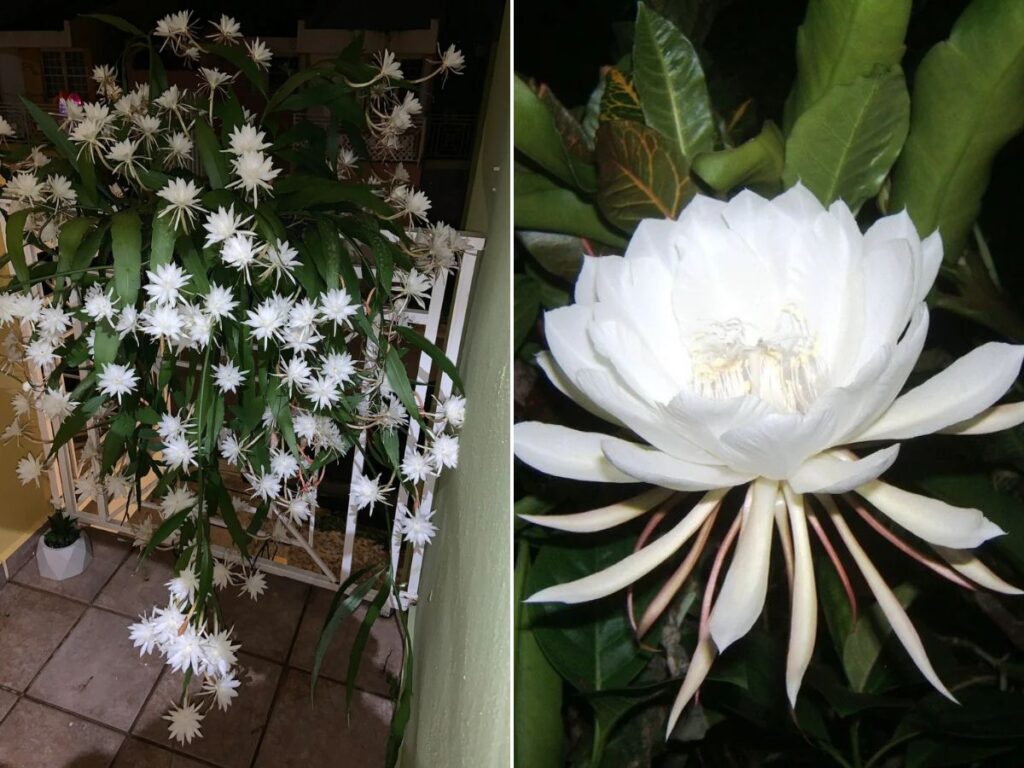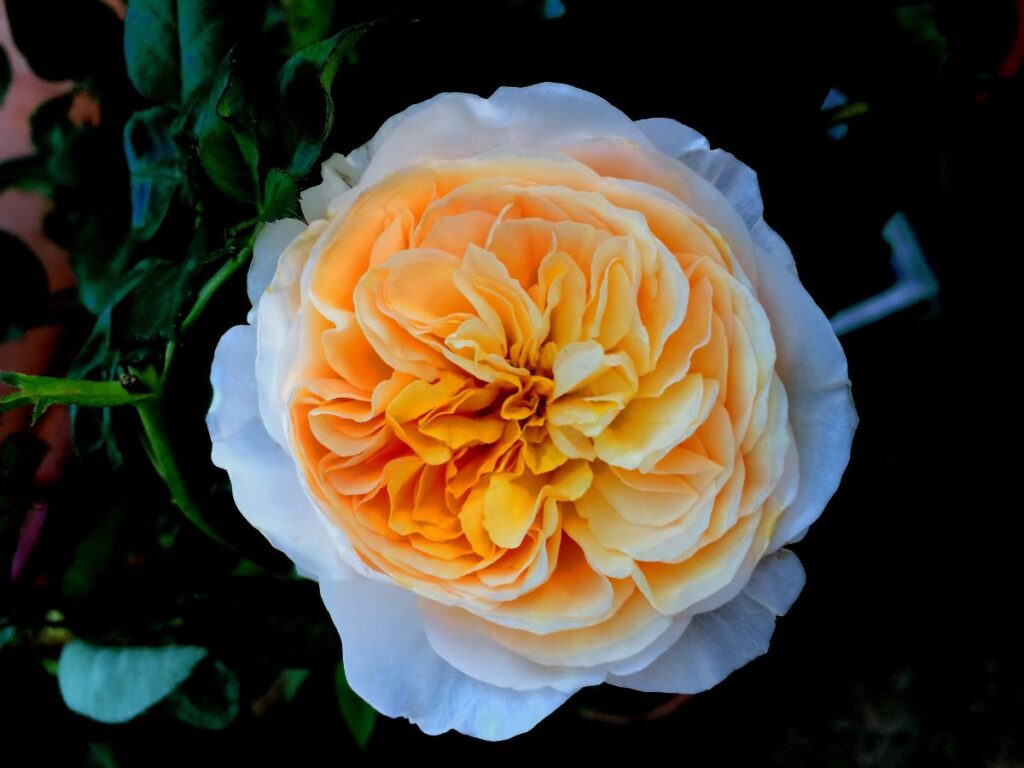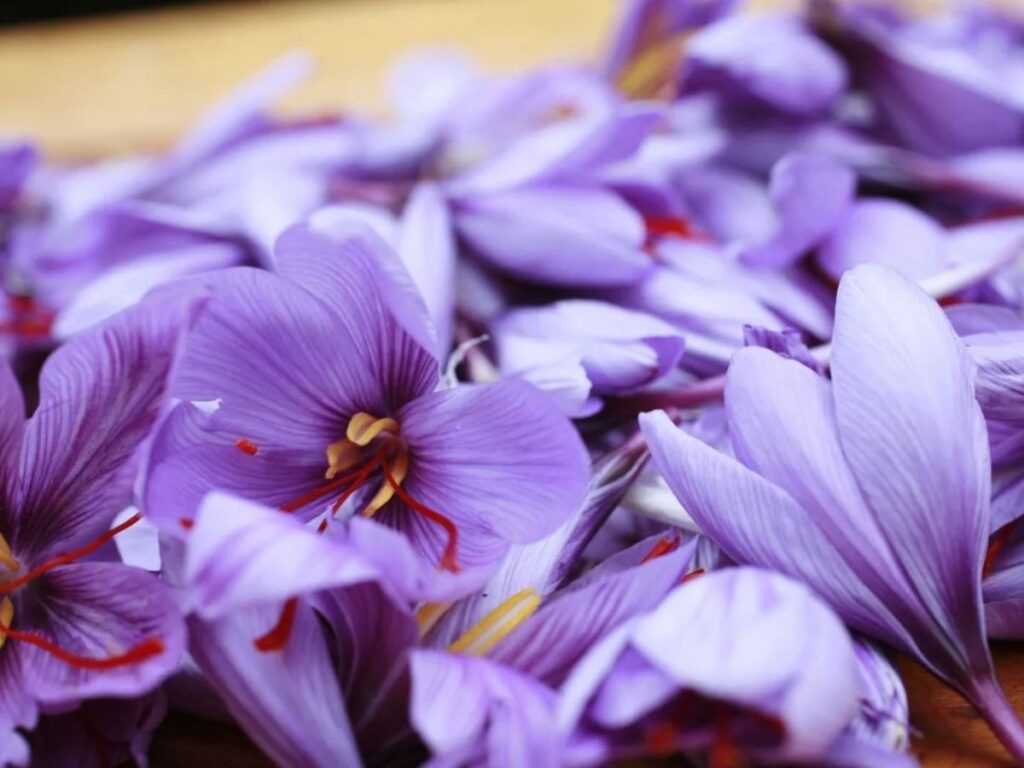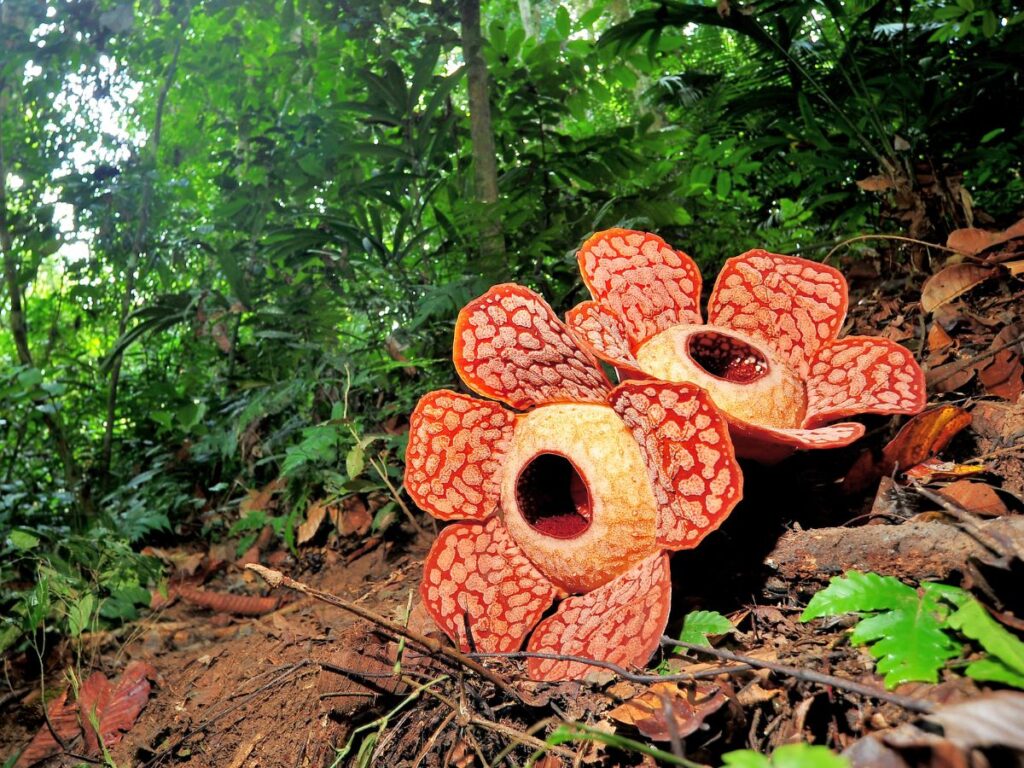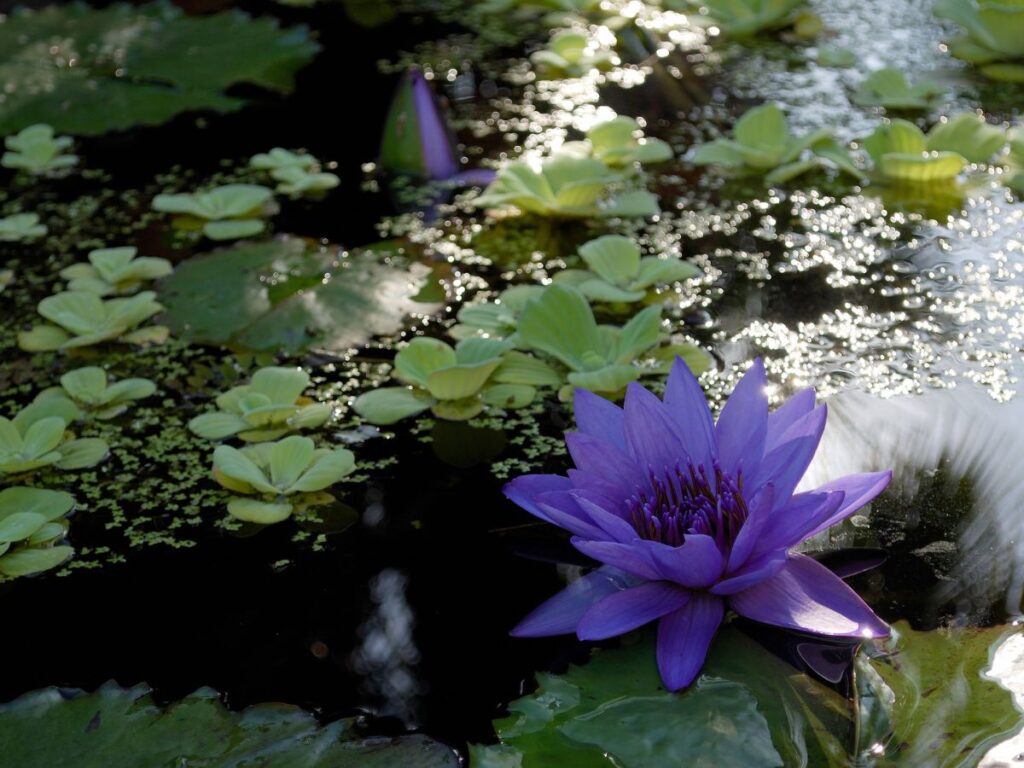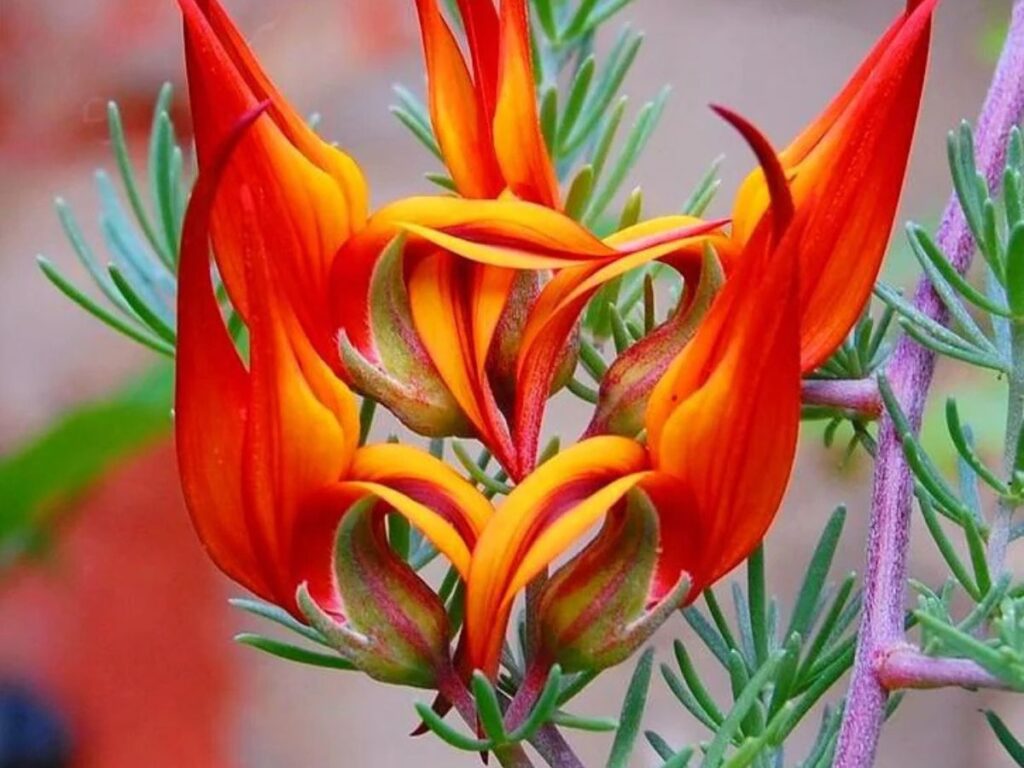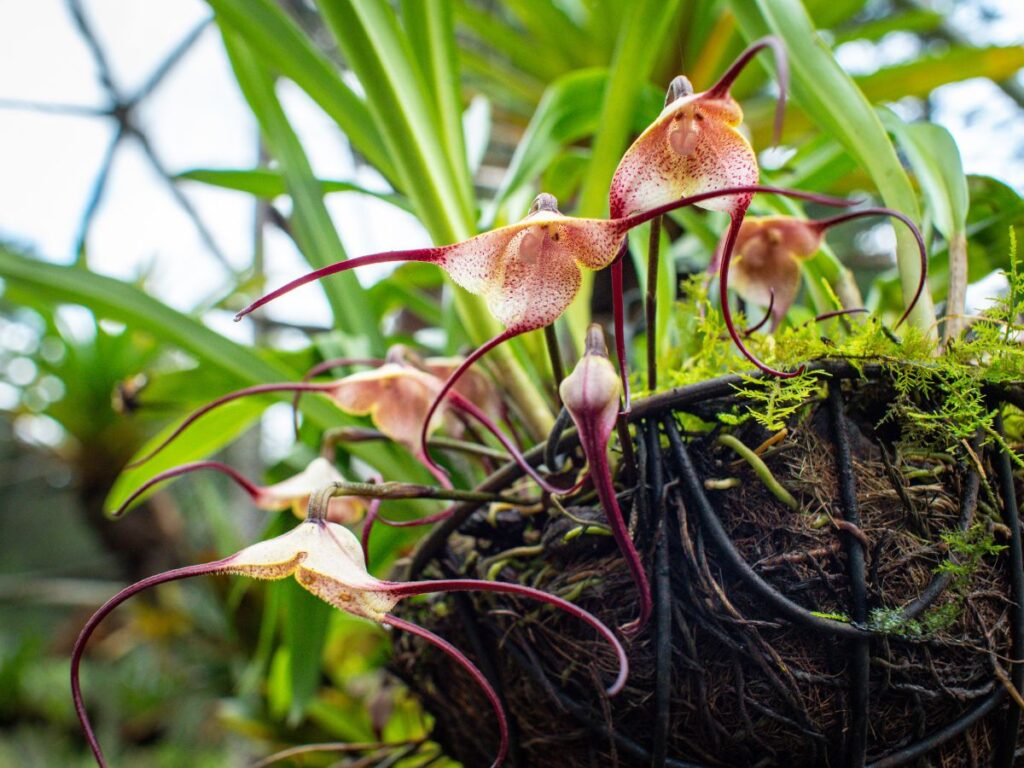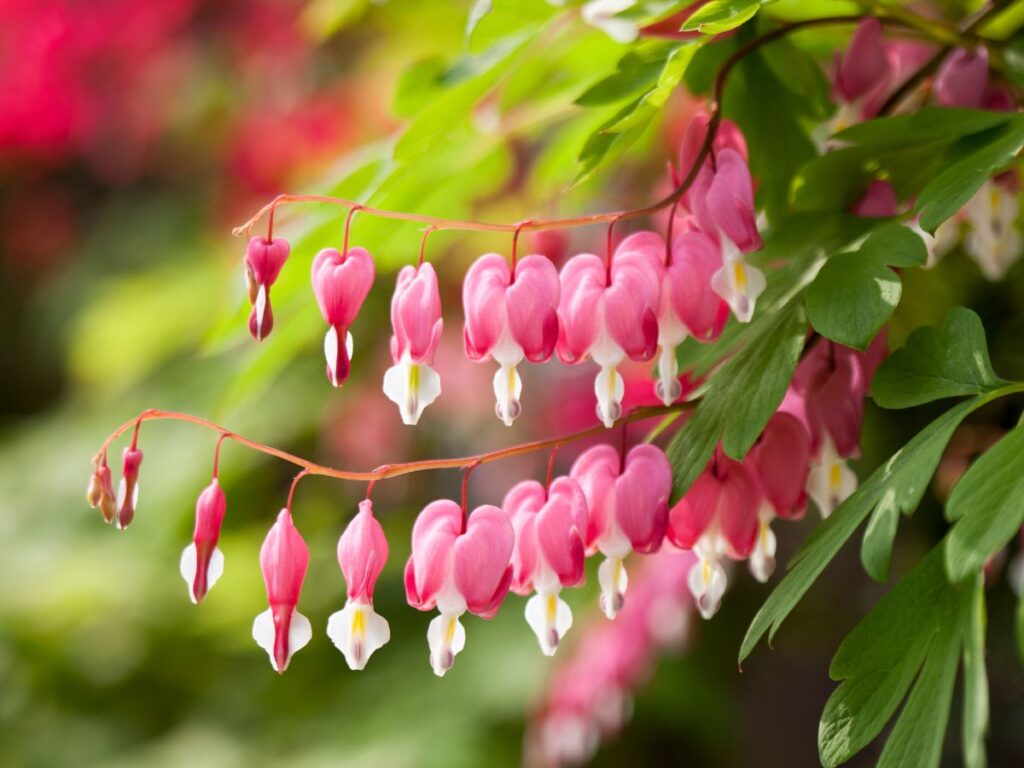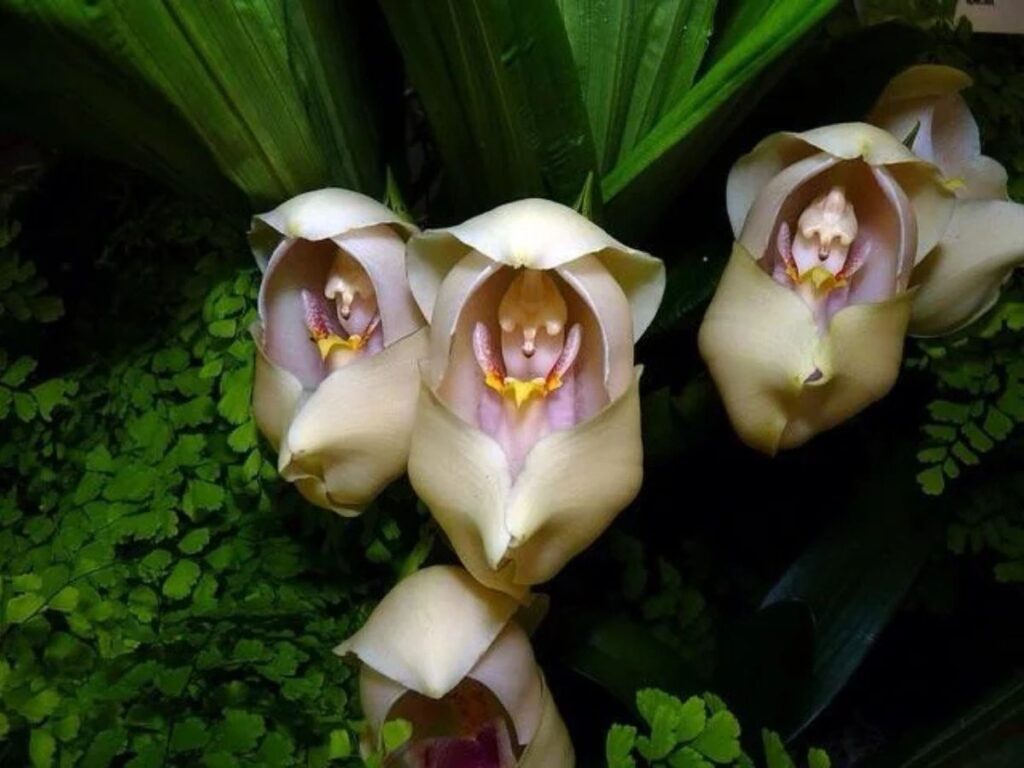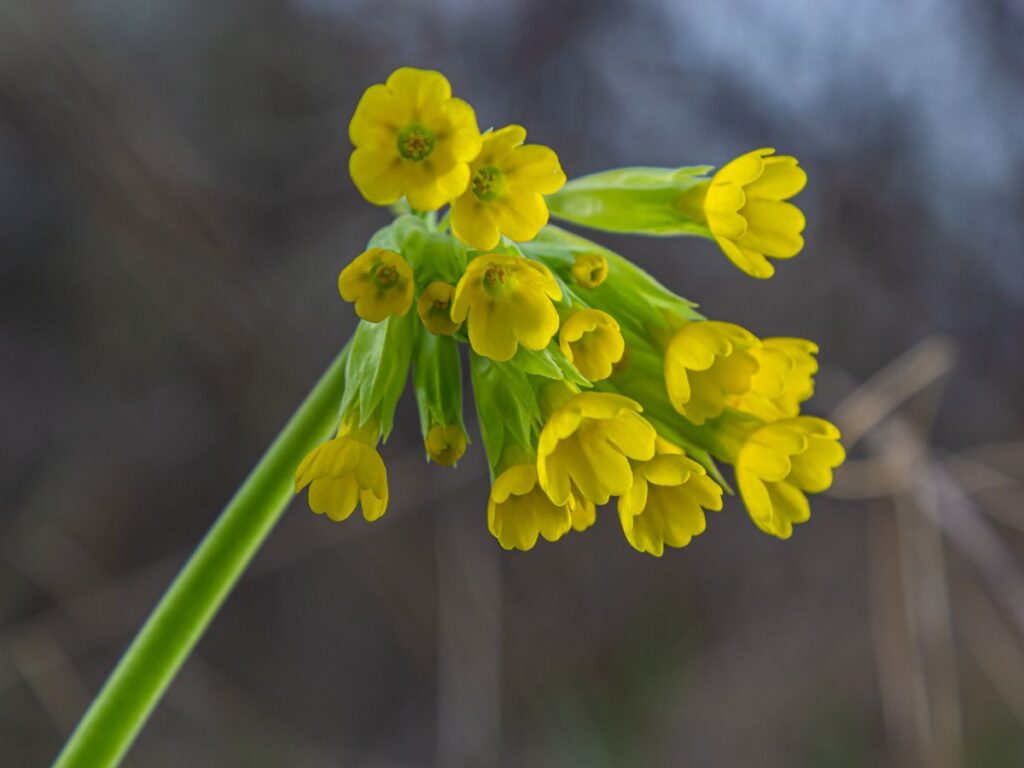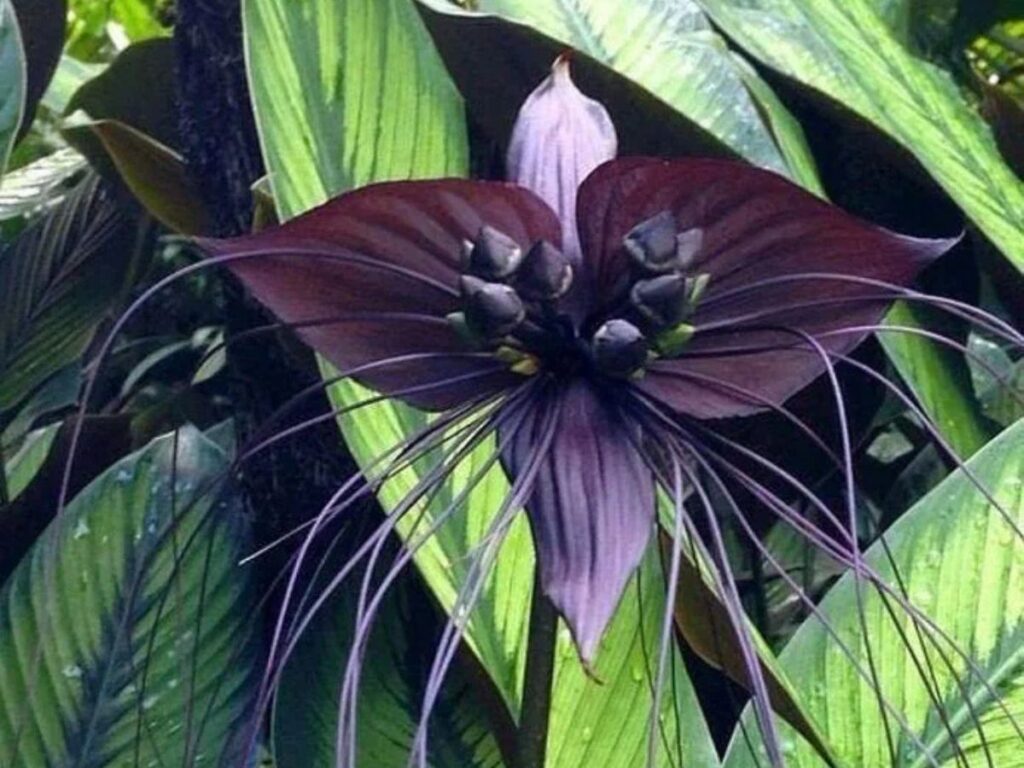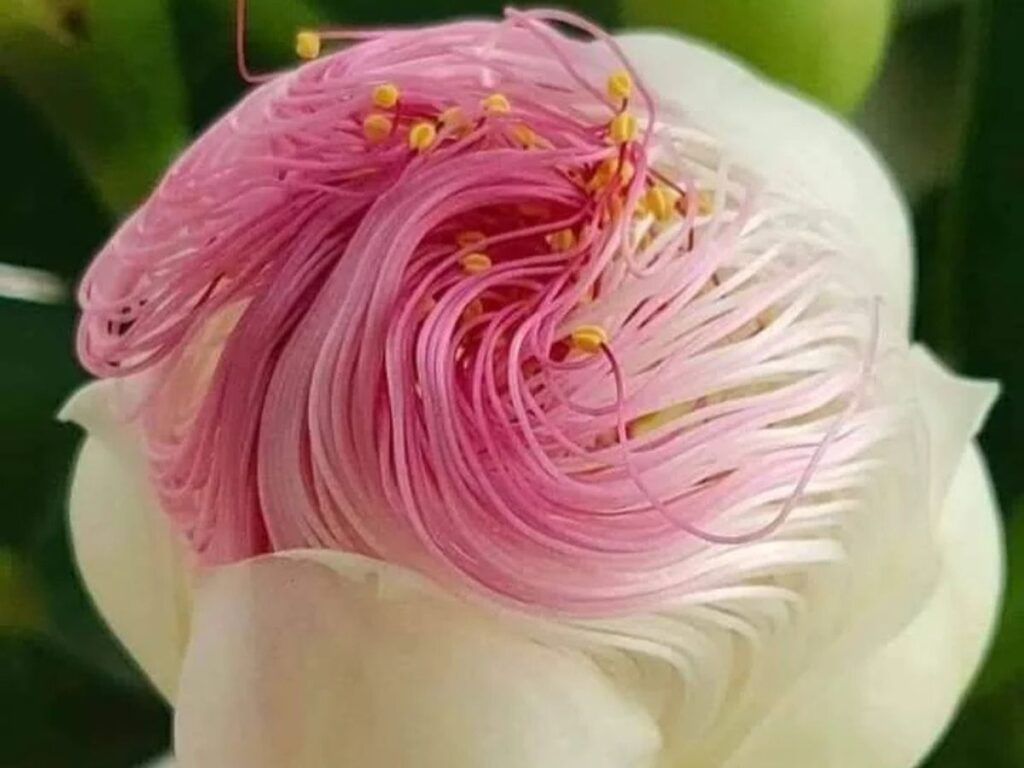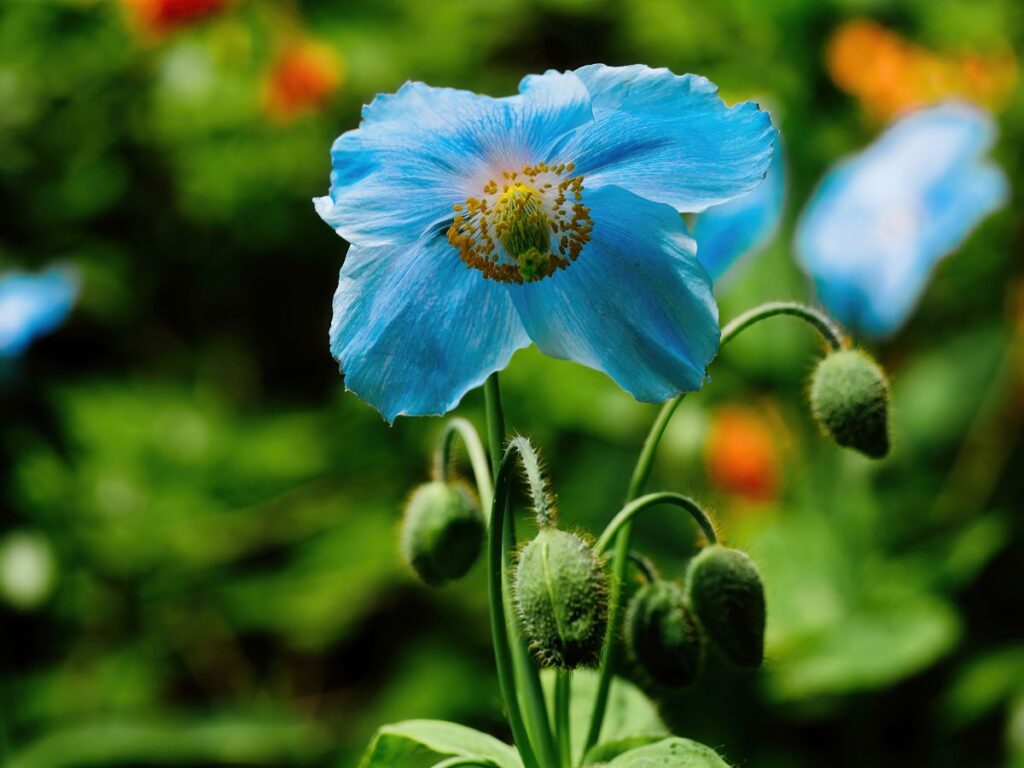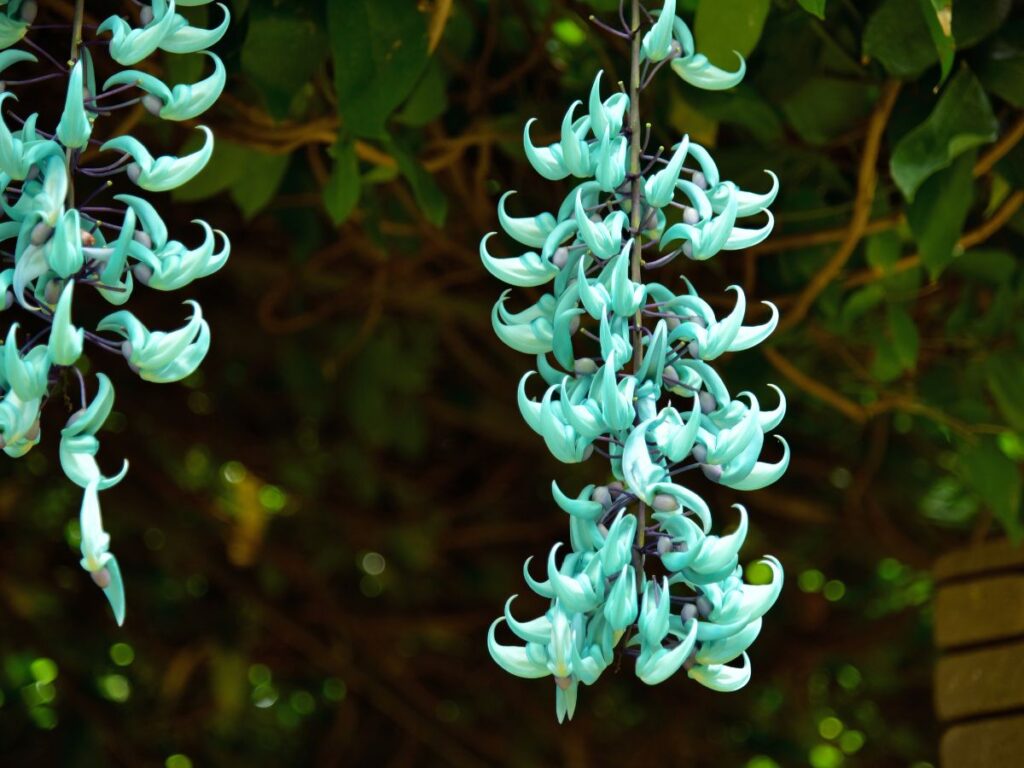Are you looking to add a touch of uniqueness to your garden? Rare flowers can transform your outdoor space into a captivating and extraordinary sight.
Their uncommon beauty and vibrant hues can set your garden apart and leave a lasting impression.
These flowers aren’t just visually stunning – they offer a special charm that can elevate your gardening experience.
By cultivating rare blooms, you can enjoy a garden that reflects your individual style and creativity. Whether you’re an experienced gardener or just starting out, these rare species can bring new excitement to your horticultural pursuits.
1. Lithops (Living Stone)
Lithops, often called Living Stones, are fascinating succulents that resemble small pebbles. These unique plants originate from southern Africa and are perfect for adding an exotic touch to your garden. Their appearance helps them blend seamlessly into rocky landscapes, which is where they get their nickname.
You might be intrigued by the way Lithops develop. These plants have evolved to thrive in harsh environments with minimal water. Their ability to store moisture in their thick leaves allows them to survive drought conditions.
Lithops bloom with small, daisy-like flowers that emerge from the center. Usually, they bloom in autumn or early winter, providing a delightful burst of color when other plants might be dormant. This makes them an exciting addition to your collection.
Caring for Lithops involves minimal effort. Ensure they’re placed in a sunny spot to mimic their natural habitat. You should water them sparingly, as overwatering can be detrimental. Allow the soil to dry out completely between waterings to keep them healthy.
2. Corpse Flower (Amorphophallus titanum)
Imagine having a flower in your garden that blooms only once every few years. The Corpse Flower, known scientifically as Amorphophallus titanum, is famous for its enormous size and unique pollinating scent. It’s quite the rare spectacle to witness.
If you decide to grow this fascinating plant, be prepared for its powerful odor. When it blooms, the plant emits a smell reminiscent of rotting meat. This scent attracts carrion beetles and flesh flies for pollination purposes.
The flower’s bloom, reaching up to 10 feet tall, is a sight to behold. While the smell might be off-putting, the experience of seeing the bloom is unforgettable. The plant’s exotic appearance is a conversation starter and a focal point in any garden.
Providing perfect conditions is vital for its cultivation. Humidity, warm temperature, and well-drained soil are key to keeping your Corpse Flower thriving. While it requires patience and dedication, the reward of watching this extraordinary plant bloom makes it worth the effort.
3. Middlemist’s Red
Middlemist’s Red is one of the rarest flowers in the world. This captivating flower is akin to a camellia and has a strong historical background. It was brought from China to Britain over two centuries ago, making it a living piece of botanical history.
With its vibrant, rose-like blooms, Middlemist’s Red adds a striking element to any garden. You’ll find the petals have a deep pink hue, often tricking the eye with their rich redness. This makes it a standout choice if you’re looking to add something truly unique to your garden space.
Caring for Middlemist’s Red requires some attention. It thrives in partial shade and well-drained soil, flourishing best in temperate climates. Watering needs are moderate, so it’s important to keep the soil slightly moist without overdoing it.
If you’re able to get your hands on Middlemist’s Red, it’s a rare opportunity to grow a living legacy. Having such a unique flower makes your garden not only distinctive but also connected to a rich tradition of botanical exploration.
4. Ghost Orchid (Dendrophylax lindenii)
The Ghost Orchid, known scientifically as Dendrophylax lindenii, is a rare gem in the world of flowers. You’ll find this intriguing plant primarily in the humid swamps of Florida and Cuba. Its elusive nature makes spotting it a delightful challenge for any plant enthusiast.
This orchid is leafless, and its unique structure adds an air of mystery. When it blooms, the white flowers appear to float like a ghost among the shadows. The eerie charm of the Ghost Orchid is amplified by its subtle fragrance, which is especially apparent at night.
The flower thrives in the high humidity and shade of swampy environments. If you’re thinking about adding the Ghost Orchid to your garden, mimicking these conditions is critical for success. Patience is key as it can take years for this orchid to bloom.
Keep in mind, though, this orchid’s rarity also means it is protected. If you’re lucky enough to care for one, you’ll be part of a special group of gardeners preserving a piece of nature’s beauty. Observing its growth will certainly be a rewarding experience.
5. Chocolate Cosmos (Cosmos atrosanguineus)
Chocolate Cosmos brings a unique flair to your garden. As its name suggests, this flower is known for its rich, chocolatey scent. Native to Mexico, its deep maroon petals add a touch of elegance and mystery.
Plant Chocolate Cosmos in well-drained soil with plenty of sunlight. Regular watering helps it thrive, but avoid waterlogging. In cooler climates, you might consider growing it in pots to bring indoors during winter.
This perennial is perfect for borders and containers, working well in a variety of garden designs. Its dark color contrasts beautifully with lighter blooms, creating striking combinations.
To encourage blooming, remove faded flowers regularly. This not only keeps the plant tidy but also promotes new growth. Chocolate Cosmos can be a delightful conversation starter, thanks to its unusual fragrance and captivating appearance.
6. Franklin Tree Flower
The Franklin Tree Flower, native to the southeastern United States, is a captivating addition to any garden. With its striking white blossoms and a golden center, it’s sure to catch your eye. This flower blooms from late summer to fall, offering an unexpected burst of brightness as the seasons change.
You might be surprised to learn that the Franklin Tree is now extinct in the wild. Fortunately, it thrives in gardens worldwide due to dedicated horticulturists preserving its beauty. The glossy green leaves turn vibrant shades of red and orange in the fall, creating a stunning display.
When adding the Franklin Tree Flower to your garden, you’ll need a sunny spot with well-drained soil. Regular watering is essential, as the tree prefers consistently moist conditions. Despite its rarity, it is hardy and can adapt to various environments, making it a unique and manageable choice for gardening enthusiasts.
7. Kadupul Flower (Epiphyllum oxypetalum)
If you’re looking for something extraordinary to add to your garden, the Kadupul Flower is an enchanting choice. Known as the “Queen of the Night,” this flower blooms only at night, making it a rare sight for most gardeners. Its delicate white petals and intoxicating fragrance create a magical ambiance.
The ephemeral nature of the Kadupul Flower adds to its allure, as its blooms last only a few hours before wilting with the first light of dawn. This makes each blooming event an anticipated occasion. Despite its short-lived bloom, the moment is worth the wait.
Caring for the Kadupul Flower involves ensuring it receives indirect sunlight and is kept in well-drained soil. It thrives in warm and humid climates, making it ideal for certain geographic locations. Try to water it moderately, as overwatering can be detrimental.
Additionally, it’s a low-maintenance plant, requiring minimal pruning. Its leaves are long and green, providing an attractive appearance even when not in bloom. If you’re lucky enough to catch it in bloom, you’ll witness one of nature’s most stunning and short-lived spectacles.
8. Juliet Rose
The Juliet Rose is known for its enchanting beauty and is often considered a masterpiece in the floral world. This rose, developed by renowned breeder David Austin, took 15 years to perfect. With its peachy-apricot petals and exquisite fragrance, it certainly stands out in any garden.
If you want to add a touch of elegance to your outdoor space, the Juliet Rose is a wonderful choice. Its blooms are large and full, with a classic rosette shape that captures sunlight beautifully. You’ll be delighted to see this rose in bloom during its flowering season.
While the Juliet Rose might be rare and pricey, its stunning appearance can make it worth the investment for passionate gardeners. It’s ideal for someone looking to add a unique and sophisticated touch to their collection. Consider pairing it with other complementary plants to enhance its appeal even further.
9. Shenzhen Nongke Orchid
The Shenzhen Nongke Orchid offers a unique touch to your garden with its striking beauty. This flower is known for its delicate appearance and extraordinary background, as it was created in a laboratory by researchers after years of study.
You might find the bloom of this orchid truly mesmerizing. Its petals display a lovely blend of soft colors, adding a touch of elegance to any space. Although it is quite rare (and really, really Expensive!), it is worth the effort and patience to cultivate.
Growing the Shenzhen Nongke Orchid can be a rewarding experience. It requires a specific environment with controlled conditions to thrive, ensuring stability and care. You’re likely to feel a sense of accomplishment once these flowers bloom in your garden.
10. Rafflesia Arnoldii
Rafflesia Arnoldii, often called the “corpse flower”, is famous for its gigantic size and unique appearance. You might be surprised to learn that it can grow up to three feet in diameter. This makes it one of the largest flowers on Earth, a true marvel of nature.
When in bloom, Rafflesia Arnoldii has a rather unusual, pungent odor reminiscent of decomposing flesh. While this may seem off-putting, the smell serves a purpose: attracting pollinators like flies and beetles. You could say it’s nature’s clever way of ensuring the plant’s survival.
Unlike most flowers, Rafflesia Arnoldii doesn’t have leaves, stems, or roots. Instead, it relies on a host plant from the Tetrastigma vine family for growth. This relationship means you won’t find it in your typical garden setting. It thrives in the rainforests of Southeast Asia, particularly in Indonesia and Malaysia.
If you’re ever lucky enough to see one in its natural habitat, you’ll witness something truly special. The vibrant reddish-brown petals are dotted with pale spots, creating an eye-catching display. Despite its rarity and unusual characteristics, the Rafflesia Arnoldii is a fascinating addition to discussions about unique flora.
11. Blue Lotus (Nymphaea caerulea)
The Blue Lotus, known scientifically as Nymphaea caerulea, is an aquatic plant revered for its beauty. This striking flower, native to Egypt and East Africa, is renowned for its enchanting blue petals. When it blooms, the bright yellow center contrasts beautifully with the petal’s cool tones.
You’ll often see Blue Lotus gracing ponds or water gardens. It typically blooms during the day, opening its petals with the rising sun and closing them at sunset. The sweet, subtle fragrance is an additional bonus, adding to its appeal.
Cultivating Blue Lotus can be a rewarding endeavor. It thrives in warm climates and prefers still or slow-moving water. If you’re in a cooler region, consider growing it in a container that can be moved indoors during colder months.
The plant holds cultural significance and its image is frequently found in ancient Egyptian art and mythology. You might be interested in incorporating it into your garden for both its aesthetic and historical value. With the right care, the Blue Lotus can be a captivating feature in your outdoor space.
12. Parrot’s Beak (Lotus berthelotii)
If you’re looking to add a splash of exotic flair to your garden, Parrot’s Beak might be the perfect choice. This eye-catching flower is known for its vibrant, flame-like blooms that resemble a parrot’s beak. Its bright red, orange, or yellow petals can light up any garden space.
Parrot’s Beak thrives in warm climates and loves the sun. Its unique, trailing foliage makes it a great option for hanging baskets or ground cover. This plant needs a well-draining soil and regular watering, but be careful not to overwater.
You’ll find that Parrot’s Beak is quite easy to care for, making it a popular choice for beginner gardeners. Pair it with other bright flowers for a striking display or let it stand alone as a focal point. With its bold colors and distinctive shape, Parrot’s Beak truly enhances any garden with its unique appearance.
13. Monkey Face Orchid (Dracula simia)
If you’re looking to add something truly distinctive to your garden, the Monkey Face Orchid is a fantastic choice. This intriguing flower gets its name from the way its blooms resemble the face of a monkey, bringing a playful character to your plant collection. It originates from the cloud forests of Ecuador and Peru.
The Monkey Face Orchid is known for its charming appearance and pleasant fragrance. It blooms at any time of the year, making it a delightful addition that surprises you with its unique blossoms. The delicate flowers are usually white and have a subtle, sweet citrus-like scent.
Caring for this orchid can be a rewarding challenge. It thrives best in cool, humid conditions with indirect light. If you can mimic its natural environment, you’re sure to see this peculiar flower flourish. Regularly misting the plant can help maintain the humidity levels it loves.
Ideal for both novice and experienced gardeners, this orchid offers an exciting project. Its quirky appearance and distinctive scent make it a true conversation starter. With the right care, the Monkey Face Orchid can become a fascinating focal point, brightening up your home or garden space with its unusual beauty.
14. Bleeding Heart (Lamprocapnos spectabilis)
The Bleeding Heart is a charming addition to any garden, known for its graceful, heart-shaped flowers. They dangle from arching stems, creating a beautiful, delicate display. Their colors typically range from soft pink to white.
You’ll want to plant Bleeding Hearts in a shady or partially shaded spot in your garden. They thrive in cool, moist environments, making them ideal for woodland gardens. Ensure the soil is well-draining to prevent root rot.
These plants bloom from late spring to early summer, providing you with a lovely splash of color. After flowering, the foliage typically dies back, so consider pairing them with other plants that will fill the space later in the season.
Caring for Bleeding Hearts is relatively straightforward. Regular watering is essential, especially in dry spells, but be cautious not to overwater. Adding mulch can help retain soil moisture and keep the roots cool.
If you’re looking to expand your flower collection, propagating Bleeding Hearts through division every few years is effective. This will help maintain their vigor and enhance their presence in your garden.
15. Swaddled Babies Orchid (Anguloa uniflora)
The Swaddled Babies Orchid, scientifically known as Anguloa uniflora, is a captivating addition to any garden. Its flowers resemble delicate swaddled infants, offering a charming visual treat. These orchids originate from the cloud forests of the Andes, making them a unique choice for plant enthusiasts.
Caring for Swaddled Babies Orchids requires some attention to detail. They thrive in bright, indirect sunlight. Ensure the soil is well-draining to prevent root rot. Regular misting helps mimic their natural humid environment, encouraging healthy growth.
These orchids bloom in spring and summer, producing delicate white flowers with a subtle fragrance. Their unusual appearance not only adds interest but also sparks conversations.
Incorporating the Swaddled Babies Orchid into your garden ensures a distinctive and enchanting display. With the right care, you can enjoy the whimsical charm they bring to your space.
16. Primula Veris (Cowslip)
Primula Veris, commonly known as Cowslip, brings a delightful touch to your garden with its yellow, bell-shaped flowers. This charming perennial is native to Europe and thrives in well-drained, grassy areas. You’ll appreciate its subtle yet captivating fragrance that attracts various pollinators like bees and butterflies.
Cowslip prefers a spot in your garden that receives full sun to partial shade. It grows best in soil with good drainage. In addition to being easy to grow and maintain, it’s a resilient choice for gardens.
These lovely flowers bloom in mid to late spring, adding color when many other flowers are just starting to grow. Besides their beauty, Cowslips have historical significance in traditional medicine.
Introduce some Cowslips to your garden to enjoy their simple elegance and pollinator-friendly nature. With minimal care, they will become a favorite in your outdoor space, charming you every spring.
17. Black Bat Flower (Tacca chantrieri)
The Black Bat Flower is a truly intriguing bloom that resembles a bat in flight. With its long whiskers and dark petals, this flower is sure to stand out in your garden. Native to Southeast Asia, it thrives in warm, humid environments.
You’ll be captivated by its unique appearance. The dramatic black bracts can grow up to a foot long. This plant requires a bit of care, such as moist soil and partial shade, to flourish.
Adding the Black Bat Flower to your garden will surely make it an unforgettable sight. Make sure to plant it in a spot where you can admire its stunning display regularly.
18. Sea Poison Tree (Barringtonia asiatica)
The Sea Poison Tree, known scientifically as Barringtonia asiatica, is a fascinating addition to any garden. As its name suggests, this tree has a strong connection to the sea, often found along coastal areas.
Its large, glossy leaves create a lush backdrop for the star of the show—the flower. These flowers boast a unique structure with long, striking stamens that resemble a pom-pom in vibrant colors. They are especially stunning at night when they open, releasing a subtle fragrance.
Despite its beauty, every part of the Sea Poison Tree is toxic. It’s important to handle it carefully and ensure it’s out of reach of pets and small children. Watching this plant thrive and bloom can be deeply rewarding, filling your garden with a touch of the exotic.
If you’re looking for something different and engaging, the Sea Poison Tree might be a perfect fit. Just a little extra care is all it needs to make your garden truly stand out with its intriguing presence.
19. Himalayan Blue Poppy
The Himalayan Blue Poppy is a true gem for your garden. This stunning flower is native to the mountainous regions of Tibet and northern Burma. Its rare electric blue petals can catch anyone’s eye.
You’ll find the Himalayan Blue Poppy is quite picky about its environment. These flowers thrive in cool, damp climates with plenty of shade. It prefers well-drained, acidic soil and regular watering.
When the poppy graces your garden, it can grow up to 1.2 meters tall. Its vibrant blooms usually appear in early summer. Make sure your garden provides enough space for these beautiful blossoms to flourish.
Patience is key when growing the Himalayan Blue Poppy. It can take a couple of years before these lovely blue flowers reveal their splendor. With the right conditions, they’ll reward your garden with a touch of exotic beauty.
20. Jade Vine (Strongylodon macrobotrys)
The Jade Vine is a mesmerizing addition to any garden. Known for its striking turquoise-colored flowers, it can create a captivating display. These blooms often hang in long, cascading clusters, reminiscent of beaded necklaces.
Originating from the rainforests of the Philippines, Jade Vine thrives in a warm, humid environment. You should consider this when deciding where to plant. It can grow quite long, so ensure there is enough space for it to flourish.
The plant’s unique color makes it a standout. You might find it attracts not only human admirers but also a variety of pollinators. Even though growing it outside its native habitat poses challenges, it can successfully be cultivated in greenhouses or tropical settings.
With proper care and attention, the Jade Vine can become the crown jewel of your garden. Regular watering and protection from extreme temperatures will help it shine. Plant it in well-draining soil and provide adequate support for its climbing nature.
Rare flowers have unique attributes that many gardeners find fascinating. They add diversity and beauty to gardens while playing a vital role in maintaining ecological balance and supporting wildlife.
Several factors contribute to a flower being rare. Often, this rarity is due to the flower’s limited geographic location. Some flowers are found only in specific regions, such as certain islands or remote areas, making them hard to find elsewhere.
Additionally, scarcity can result from specific growing conditions. Certain flowers require unique soil types, climate, or cultivation methods, which can be difficult to replicate in domestic gardens. This rarity adds an element of challenge and excitement for avid gardeners.
Moreover, human activities can impact their scarcity. Habitat destruction and collection for trade can significantly reduce wild populations. Protection efforts are crucial to ensure these unique flowers continue to thrive in their natural environments.
